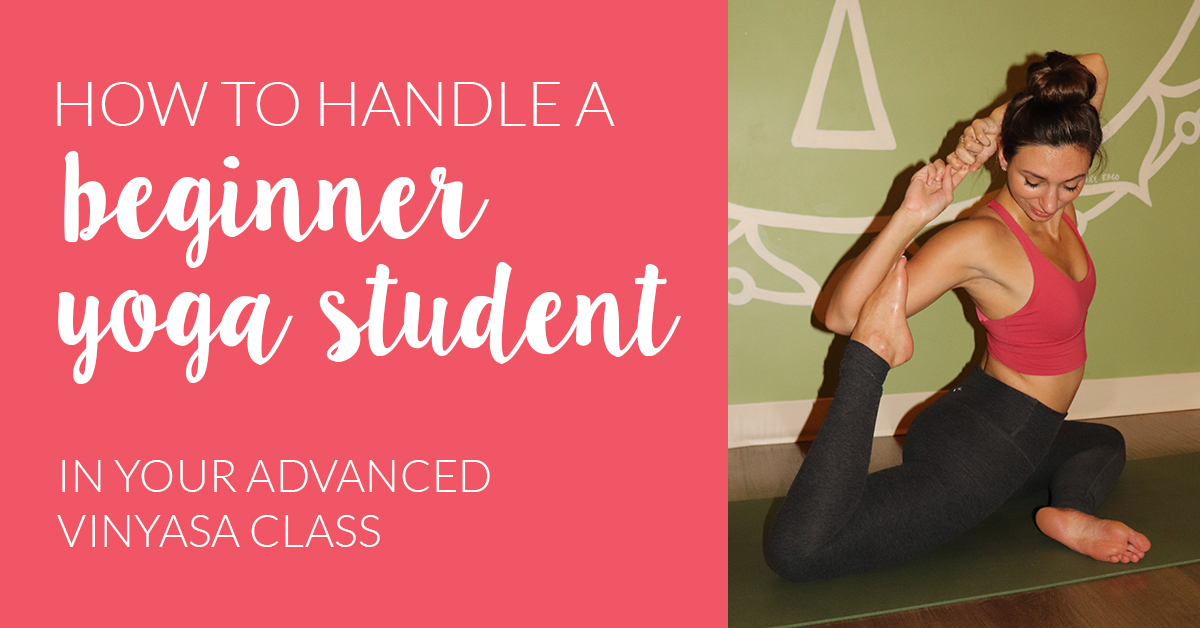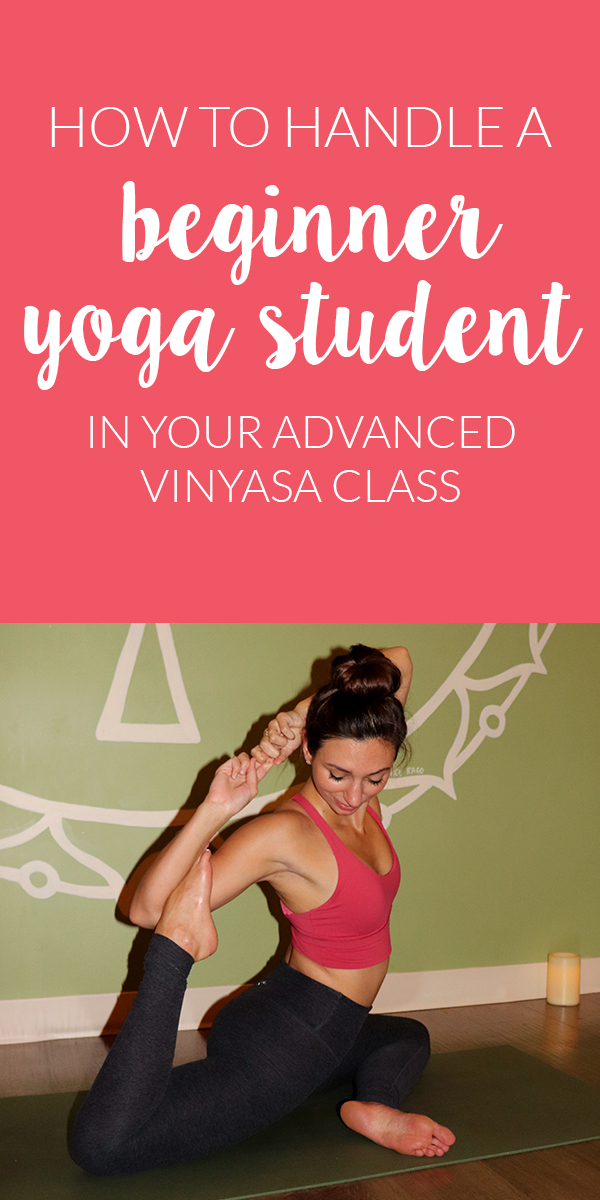Teaching yoga to all levels: What to do when a beginner student comes to your advanced flow
No matter if you teach all-level classes, advanced classes, beginner/foundational classes, or a specific style of yoga, sometimes you’ll get a student that throws you off. I’m not talking about their personality, but the experience level they’ve reached with their asana practice.
A lovely human walks into your studio and lets you know it’s their first time doing yoga. They’ve walked by the studio a million times and finally decided to come in and try it out. They seem a little nervous….and so are you, considering the class they wandered in to is supposed to be an Advanced 75 minute flow.
If you’re a yoga teacher that prepares the class in full and plans out the entire hour (like myself), this scenario can throw you waaaaay off.
After several years of brand new yogis coming to my intermediate level class, I’ve finally figured out a few tips to make life easier on everyone:
How to handle a beginner yogi in your advanced class
Start the class with a preface.
As you greet your students at the top of the hour, make sure to mention, “this class is meant to be challenging, but not discouraging. Please take this next hour at your own pace and take breaks and modifications if needed.” Etc. Letting students know that it’s okay to grab a block or rest is the first step to a successful all levels yoga class.
You may also want to provide a simple roadmap of what to expect throughout the hour, “this class is a vinyasa flow, which means we’ll be moving with the breath for most of the hour.”
Provide helpful tips along the way.
Modifications are amazing for every level of yogi, so make sure to mention different options when breaking down your poses. For example, let students know they can put their knees down when moving through Chaturanga. Or, drop a knee during revolved crescent lunge.
In addition, cue utilizing a block as much as possible. In my personal practice I use a block all the time because it actually deepens my asana practice. A lot of students view blocks and straps as crutches - thinking they are weak if they use them - but in reality, blocks and straps can be a much needed bridge to the next variation of a posture.
Some of my favorite yoga poses with a block:
- Pyramid pose - one on each side of the front foot or one block in front of the foot
- Standing splits
- Half moon
- Triangle
- Revolved triangle - on the pinky side of the front foot
- Full splits - one on each side for the hands to rest
- Jump-throughs - on each side for each hand
- Supported fish or supported bridge
Give gentle, mostly verbal, adjustments.
You’ll be able to read the new student quickly. They are either really nervous and want to hide in the back corner of the room, or they’ll be eager to try out the class. Take note and decide how to proceed when they need help during your flow.
If they are timid, think about no adjustments. I know that sounds counterintuitive - your sole job is to teach them - but they may have a better experience by simply watching the other students around them and learning as they go.
On the flip side, if a new student is particularly talkative before class and stands in the middle of the crowd (or if they come with a friend who is a regular), consider giving them helpful cues throughout class. I like to offer a verbal adjustment. Walk over to the student and say quietly “just turn your foot to the front” with a smile. Usually they’re delighted to be corrected because they want to learn.
Cue breaks.
If you’ve got several new yogis in your intermediate level class, give the whole class a break when it makes sense. Let them play around in cat/cow and stretch out their core after core work.
After a standing sequence let them rest in child’s pose or even cue a proper water break. Breaks are usually well-received with all types of students.
Teach them something fun.
Here’s where it gets interesting - if you notice your new student is catching on pretty well and you’ve got a lot of seasoned and eager regulars, it’s time to break it down. I mean... break down a posture of your choice. My favorites are crow pose, side crow, flying pigeon, and bird of paradise. I usually make time for a demonstration and “yogi play time” after our standing sequence and before cool down.
Students (almost always) love learning new postures. Igniting a sense of curiosity & play usually lifts the vibe in the room.
Tip: make sure to mention that every pose is always optional. If a student is hot and tired by the time you demonstrate crow pose, they should feel comfortable sitting it out.
At the end of class, you want to make sure your new student isn’t running away from the studio and telling all of their friends how horrifically difficult your class was! Whew! Make sure to check in with them after class by simply saying, “How did that feel? Do you have any questions?”
They’ll appreciate that you remembered it’s their first class and that you genuinely care about their experience.
And, above all, shine your light as you teach because it is contagious!
Love + light,
Kim
Have you ever been in this type of situation? What did you do to make sure the class was successful for everyone? Comment below.


